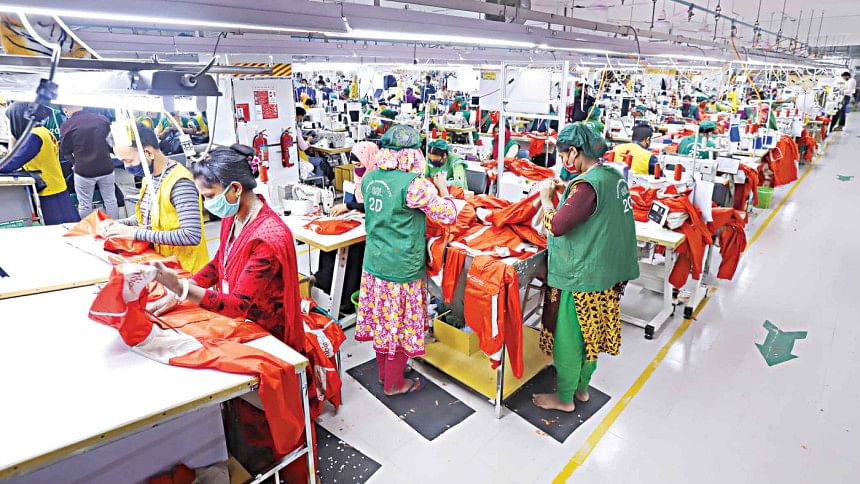Exports fetch $3.13b in April

Earnings from merchandise exports surged as much as six times year-on-year to $3.13 billion in April thanks to a rebound in apparel shipment buoyed by the reopening of the economies in the US and Europe.
Export receipts rose abnormally in April compared to the level in the same month last year, when overseas sales stood at a meagre $0.52 billion, the lowest in the history of Bangladesh, as a strict lockdown and the closure of factories in Bangladesh due to Covid-19 battered the economy.
Overall exports grew 8.74 per cent year-on-year to $32.07 billion between July and April, data from the Export Promotion Bureau showed.
In April last year, the earnings from the garment sector, which contributes about 84 per cent to the national exports, was only $0.37 billion.
Despite the abnormal rise in the shipment in April this year, the earnings were 6.44 per cent below the monthly target of $3.35 billion.
Between July and April, the first 10 months of the current fiscal year, the receipts from the garment shipment were up 6.24 per cent year-on-year to $26 billion, showing the resilience of the industry amid the fallouts of Covid-19.
Of the sum, $13.99 billion came from the shipment of knitwear items, which registered 15.34 per cent year-on-year growth. Earnings from the woven shipment fell 2.71 per cent to $12 billion.
The shipment of knitwear items is increasing as people are spending more time indoors. Because of the pandemic, the demand for woven garment such as formal shirts and trousers has fallen.
Woven exports declined by more than 10 per cent during most of the months in the last one year. April saw the lowest decline during the period, in an indication that the segment is rebounding thanks to gradual reopening of stores and offices.
Faruque Hassan, president of the Bangladesh Garment Manufacturers and Exporters Association, said: "We have not returned to normalcy yet and the rebound of garments items has just begun. We hope the export of apparels to the European markets will get a boost by September."
The export to the US market was performing strongly, he said.
The global consumption of apparels has declined by more than 10 per cent over the last year because of the drastic fall in income of the people because of Covid-19, he said.
"This has affected the prices of garment items significantly although the cost of production has increased because of the higher prices of the raw materials and freight charges."
The overall prices of garment items may go up to some extent in the next few months because of higher prices of fabrics, Hassan said. "But it will not cover the increase in the costs of production."
The shipment of jute and jute goods and leather and leather goods rose.
Jute and jute goods exports surged 30.88 per cent year-on-year to $1.03 billion during the 10-month period. The earnings from jute and jute goods shipment crossed $1-billion mark for the first time in nearly seven years, riding on increased shipment to Middle Eastern countries.
"The buoyancy in exports earnings in jute yarn and twine is the result of the higher prices of jute this year. Last year, the prices of jute were low. As the prices surged in the current fiscal year, the export receipts went up in terms of value," said Shahidul Karim, secretary-general of the Bangladesh Jute Spinners Association.
Earnings from leather and leather goods shipment rose 8.56 per cent year-on-year to $760.92 million between July and April.
Md Saiful Islam, president of the Leathergoods and Footwear Manufacturers & Exporters Association of Bangladesh, said the leather sector's export grew mainly because of the payment of arrears by the international retailers and brands.
Moreover, the export had been performing well since last November and December, he said.
Exports of agricultural products grew 9.1 per cent to $824.59 million.
The shipment of pharmaceuticals, rubber goods, bicycle, plastic goods, carpets and footwear rose, while that of ceramics, ships and furniture fell.

 For all latest news, follow The Daily Star's Google News channel.
For all latest news, follow The Daily Star's Google News channel. 




Comments